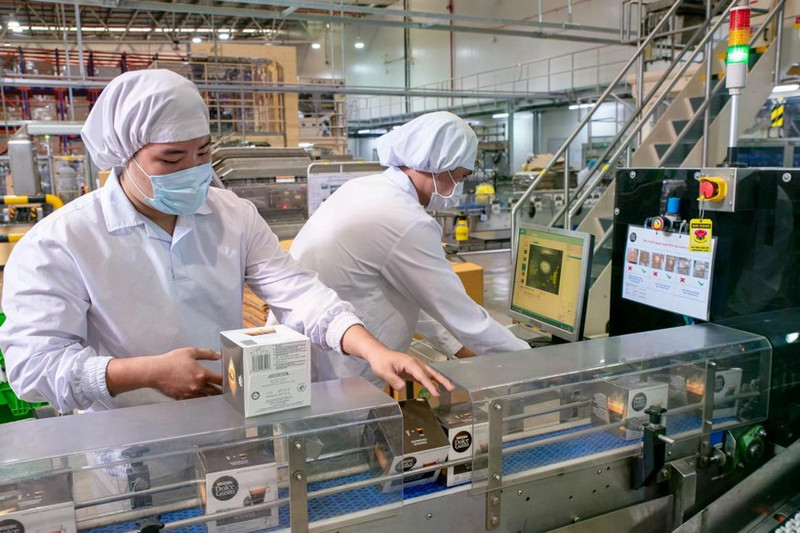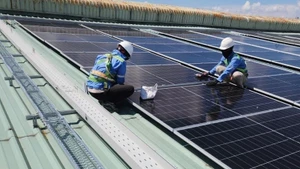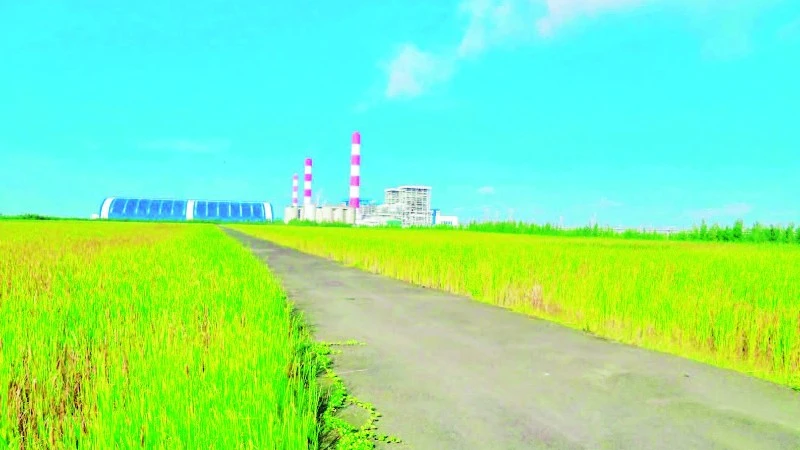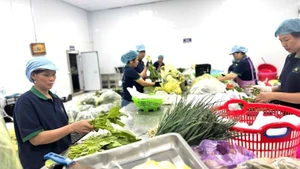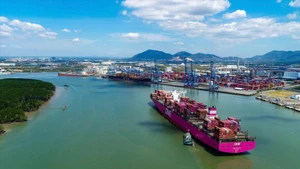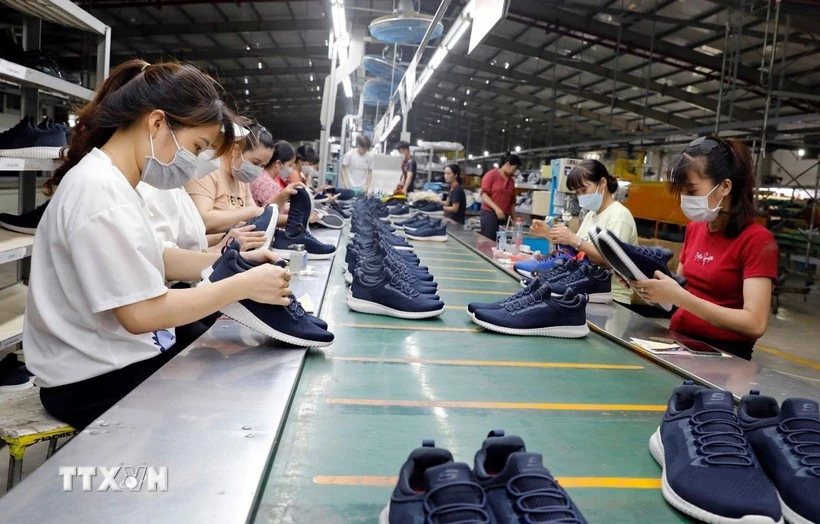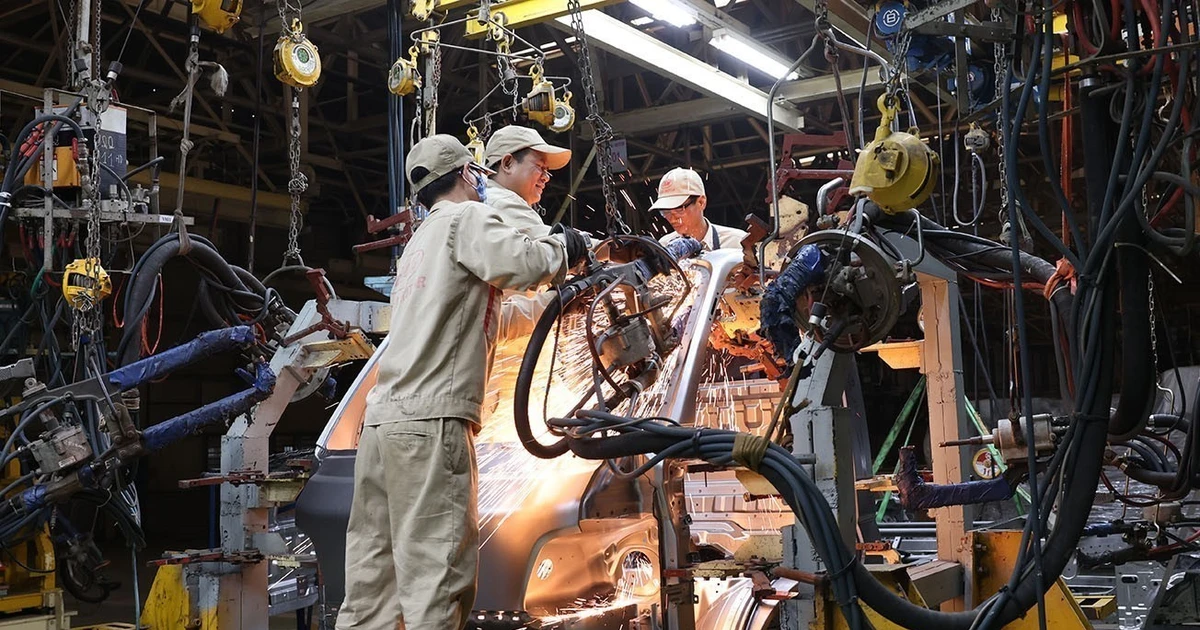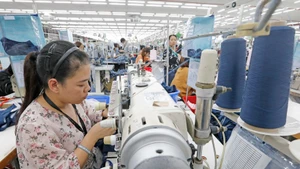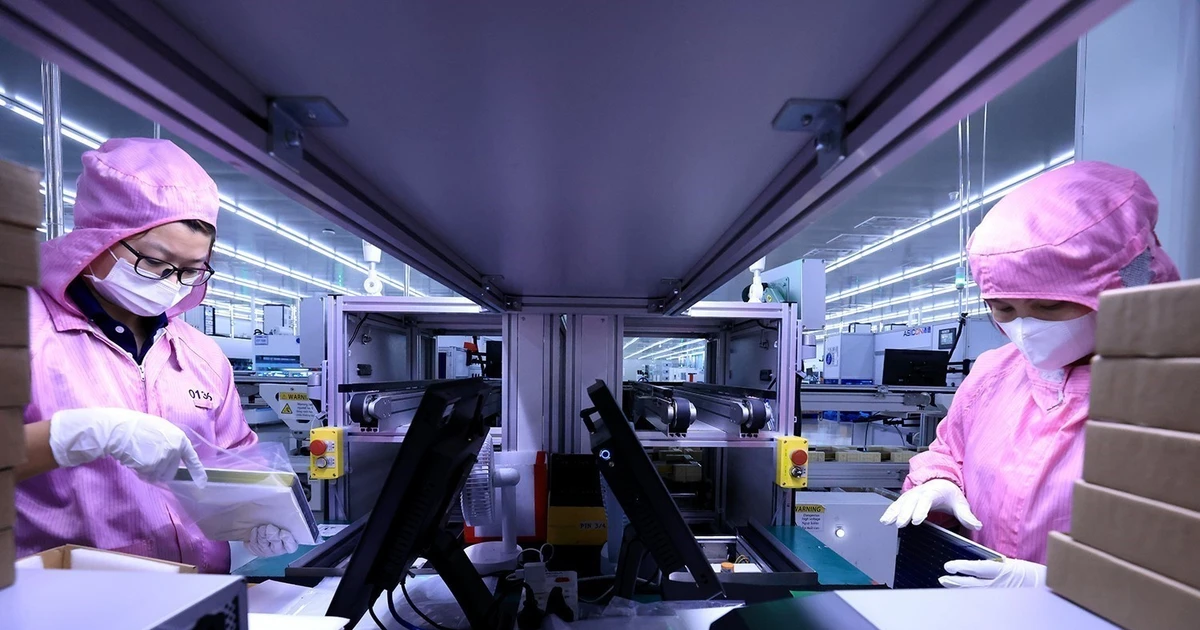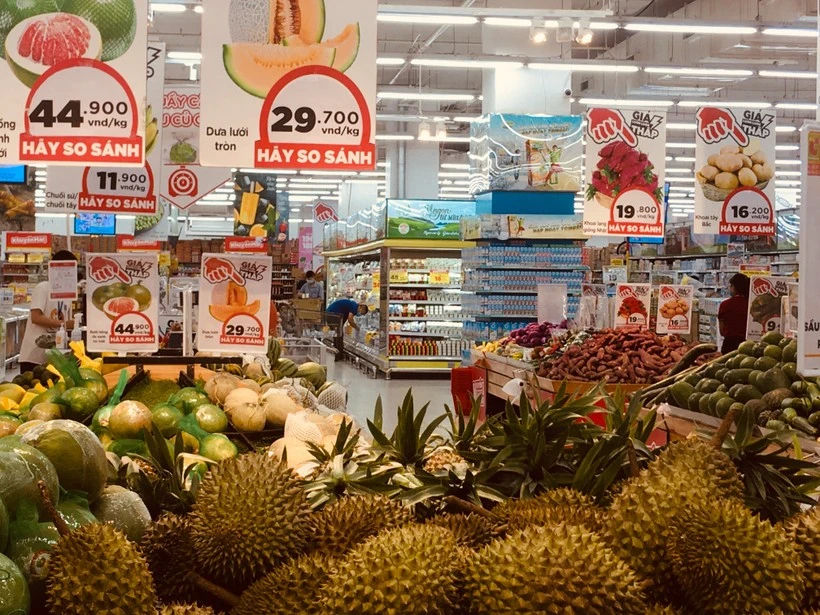Exports continue to be the main driver of economic growth, with export turnover reaching 219.8 billion US$, up 14.4% year on year.
Nguyen Thi Mai Hanh, an expert from NSO, noted that Viet Nam has effectively leveraged free trade agreements (FTAs), expanded markets, and enhanced product value amid stable international demand for Vietnamese goods.
Economic sectors with strong growth drivers
Despite ongoing market fluctuations in the latter half of 2024, businesses have sustained their growth momentum. Viet Nam National Textile and Garment Group (Vinatex) reported consolidated revenue of approximately VND 9.035 trillion in the first six months, a year-on-year increase of 8%, with consolidated profits estimated at nearly VND 556 billion, reaching 61% of the annual plan and a 97% increase compared to the previous year.
Le Tien Truong, Chairman of Vinatex’s Board of Directors, explained that the US’s 90-day suspension of symmetrical tariffs created favourable conditions for large orders to return. Contract prices were reasonable, and delivery times extended, enabling new orders and accelerated deliveries before July 5, driving profit growth.
“Currently, businesses have orders booked until August and September, and negotiations for subsequent months continue,” he said.
Alongside exports, the industrial and construction sector saw notable gains, with the overall industrial index rising 8.07% against the same time last year. In the meantime, the processing and manufacturing industry was the motive of the economy, posting a 10.11% growth.
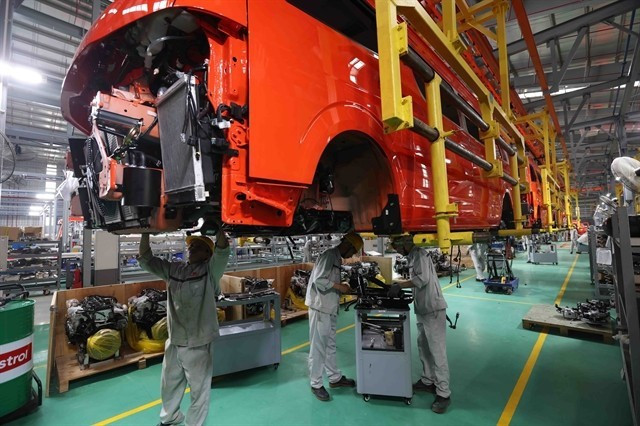
Final consumption expenditure also grew robustly, supported by stable household spending and a sharp increase in government consumption. Tourism surged in both domestic and international segments, with many stimulus programmes being launched nationally and locally. International visitor arrivals to Viet Nam rose by 20.7% in the first half of the year.
Accelerated disbursement of public investment capital into key infrastructure projects has not only boosted industry and construction but also laid a foundation for expanding the economy’s overall production capacity in the long term.
Viet Nam’s GDP growth in the first half of the year reflects the synchronous recovery and development of economic sectors, driven by stable macroeconomic policies, public investment, FDI, recovering domestic demand, and effective utilisation of international economic integration advantages.
Nguyen Thi Mai Hanh, Head of the National Accounts System Department at the NSO
Foreign direct investment (FDI) inflow has increased markedly, especially into new projects in high-tech, semiconductors, and AI sectors, creating new production capacity, jobs, and opportunities for learning and management.
According to Nguyen Thi Mai Hanh, Head of the National Accounts System Department at the NSO, Viet Nam’s GDP growth in the first half of the year reflects the synchronous recovery and development of economic sectors, driven by stable macroeconomic policies, public investment, FDI, recovering domestic demand, and effective utilisation of international economic integration advantages.
Economic scenario and strategic caution
Following the Q1 estimates and reviewing growth potential for subsequent quarters, the NSO outlined the GDP growth scenario, with a 7.52% growth in the first half of the year, followed by 8.42% in the second half, with 8.33% in Q3, and 8.51% in Q4. This plan reflects a concerted effort to reach the ambitious 8% GDP growth target set by the National Assembly.
However, Mai Hanh pointed out that challenges remain in the second half, including escalating geopolitical tensions and uncertainties that pose significant risks to the global economy, affecting trade, investment, supply chains, and commodity prices, thus indirectly impacting Viet Nam’s production and exports.
International organisations like the IMF and World Bank have downgraded global growth forecasts for 2025 due to persistent inflation and weakening consumer demand, which could adversely affect Viet Nam’s exports, especially in sectors with large export shares such as textiles, wood products, footwear, and electronics, due to reduced demand from markets like the US and EU.
Exchange rate volatility will increase import costs for raw materials and foreign currency debt repayments. High international interest rates require Viet Nam to adopt a more cautious monetary policy, limiting room to relax. The US’s reciprocal tariff policies will exert considerable pressure on Viet Nam’s production and export activities in the coming months.
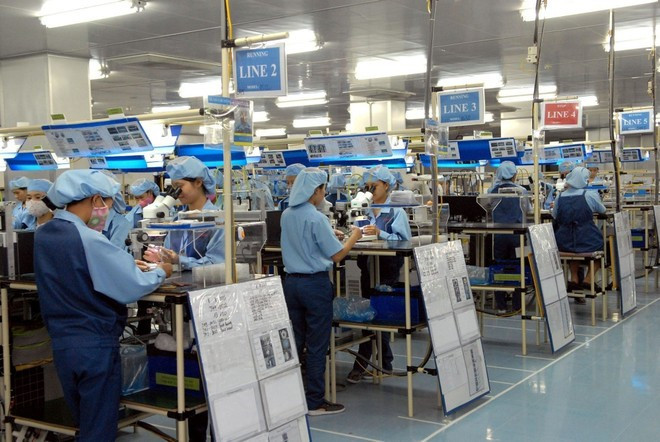
Domestically, industrial growth shows signs of recovery but remains slow and uneven. Some sectors such as electronics, textiles, footwear, and wood processing still record high growth but are beginning to lose momentum due to stagnant orders and price competition from other countries.
Public investment disbursement faces bottlenecks due to land clearance issues, overlapping legal procedures, and limited local project implementation capacity.
Domestic consumption is recovering but remains cautious, with consumers altering spending habits amid inflation concerns and unstable income recovery. Although retail sales and consumer services are showing positive trends, they are not yet strong enough to drive widespread economic momentum.
Vision to unlock growth potential
Looking ahead, the NSO highlights public investment as a key growth driver, with the government, ministries, and localities decisively aiming to disburse 100% of public investment capital, particularly for national key infrastructure projects such as expressways, airports, urban ring roads, and energy projects.
Science and technology, digital transformation, and innovation will also play a pivotal strategic role. The boom in these areas provides opportunities for businesses to adopt artificial intelligence (AI) technologies in production to reduce costs, enhance labour productivity, and boost competitiveness.
Credit growth is targeted at 16%, adjusted as needed based on actual developments in 2025, providing substantial room for economic expansion by supplying abundant capital to stimulate production, investment, and overall consumption.
Consumption is supported by policies such as the 2% value-added tax reduction effective from 1 July on many goods and trade stimulus measures to boost domestic demand.
Achieving an 8% GDP increase in 2025 is a major but necessary challenge to lay the foundation for the next breakthrough phase.
At the regular June government meeting, Prime Minister Pham Minh Chinh emphasised that amid slowing global growth, achieving an 8% GDP increase in 2025 is a major but necessary challenge to lay the foundation for the next breakthrough phase.
To realise this, he called for a year-on-year increase of 11–12% in total social investment and greater efforts to fully disburse public investment by December 31.
He ordered ministries, sectors, and localities to proactively and flexibly respond to the US’s reciprocal tariff policy, seeing this as an opportunity to restructure and enhance economic self-reliance and promote international integration in a deeper and more substantive manner. The growth model must shift towards green, rapid, sustainable, and circular development to improve national competitiveness.
The Ministry of Industry and Trade is tasked to effectively utilise existing 17 FTAs and promote new agreements with promising markets such as the Middle East, Africa, Latin America, and Central Asia.
